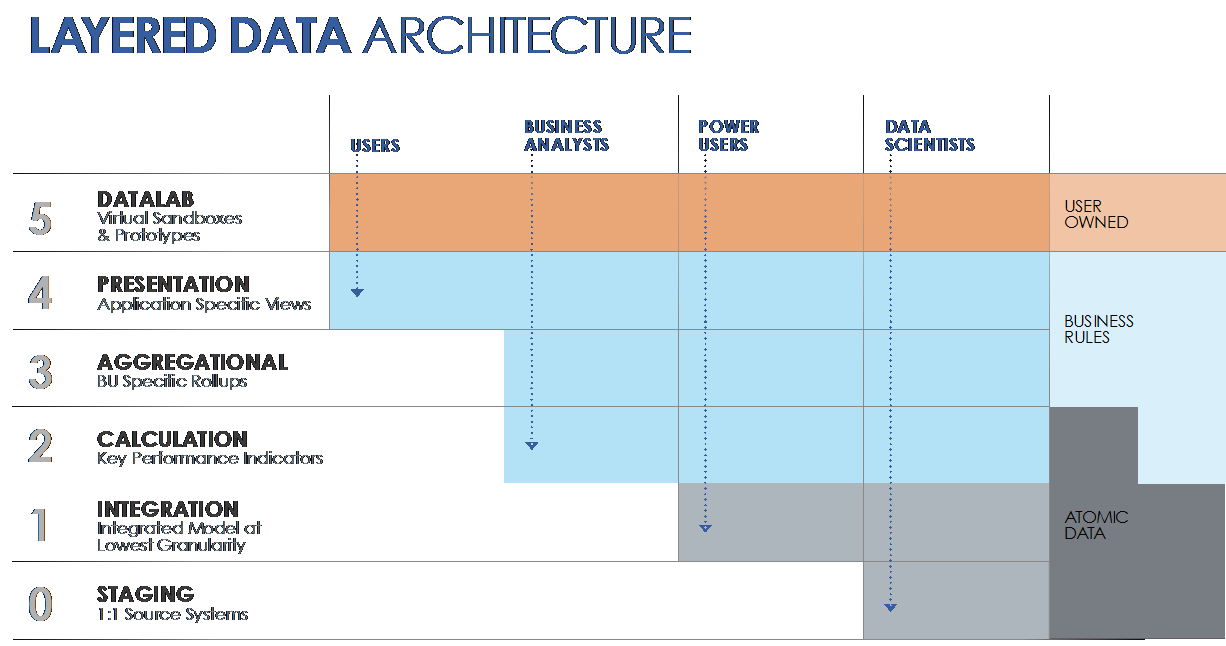Sometimes we can overcome dilemmas in one sector by looking to entirely different industries for challenges met and lessons learned: The context may be different, but the insights and solutions can be strikingly similar.
That’s certainly the case for big data analytics as we seek to loosen IT roadblocks, democratize data access and break down silos – all in a way that doesn’t cause more harm than good through costly inefficiencies like data duplication, error and just plain chaos.
I’ve talked about this in my advocacy of the Sentient Enterprise approach to maturing analytic capabilities, as organizations grow larger and larger. Especially when working with many experts and massive infrastructure that may scale all the way up to the global production level, it’s easy for collaboration to veer into chaos if you don’t have the proper platforms and hassle-free governance to help people stay in their lanes, and still effectively work across those lanes so silos don’t crop up.
A Lesson from the Telecom Industry
As it happens, very similar challenges were met and overcome in the telecommunications industry – specifically in how the telecom industry had to break up its infrastructure (copper wire; transformers; interfaces; software, etc.) so different people with different levels and types of skills can collaborate on a unified whole without having to learn each other’s jobs, or mess up the overall system and its inter-linkages. It’s called the Open Systems Interconnection model, or OSI, and it was first conceived in the 1970’s as the telecom industry was growing at an unprecedented pace (not unlike how data products and services are growing today).
OSI has helped many professionals with various specialties collectively design and maintain huge telecommunications network architectures that are – as the Wikipedia entry on OSI describes it – “flexible, robust and interoperable.” I would add the word “agile” here. That’s because what OSI is helping create in telecommunications is agility at a huge operational level. And, to me, the clear mandate is we need to apply similar OSI-style principles to data analytics to get that same coveted agility at scale – something that simply does not fully exist yet at the enterprise level.
Fortunately, we’re also not at square one in fulfilling that mandate; far from it! Since my days at eBay, and now at Teradata, I have been working with collaboration platforms for analytics that help data scientists and other users and analysts convene and extract insights around data safely and profitably. These platforms are efficient, fun vs. frustrating and often deployed at essentially zero-cost.
Layered Data Architecture
One primary platform that is a cornerstone of the Sentient Enterprise capability maturity model I mentioned is called the Layered Data Architecture. In a nutshell, it’s a tiered system for concurrent and customized access by many users of different skill levels and job descriptions. It’s an OSI-style nerve center for your data architecture. Just like a telephone line worker is dispatched to run cable in the field while a systems traffic engineer is focused productively on routing options – without messing up the lines or each other’s jobs – so the Layered Data Architecture keeps the business analyst busy and supplied with data on key performance indicators without messing with source systems or low granularity modeling that the deep dive, data scientist is preoccupied with.

It scales just like major telecom does, and it organizes workflow and access just like OSI weds experts to their fields of expertise. Governance is built in seamlessly just like how Google Docs manages version control or Uber makes it easy to track taxi expenses and not have to fiddle with little paper slips in the back seat – accountability without the hassle.
This is, by no means, a wonky blog. Our goal is to talk about the problems that any businessperson will recognize. I’m seeing wins happening in analytics, and as we’re successful, some of our own achievements may become models for other industries. Let me know what you think, and tell me if you see these issues and potential solutions in whatever industry you’re in!
